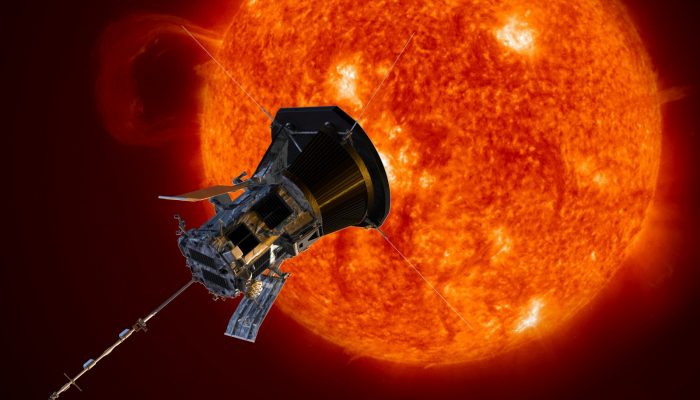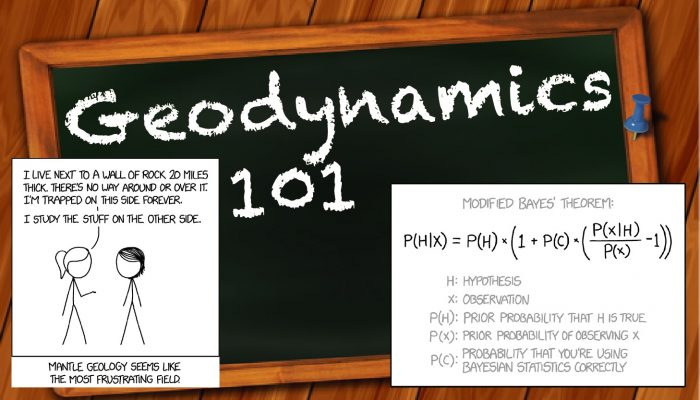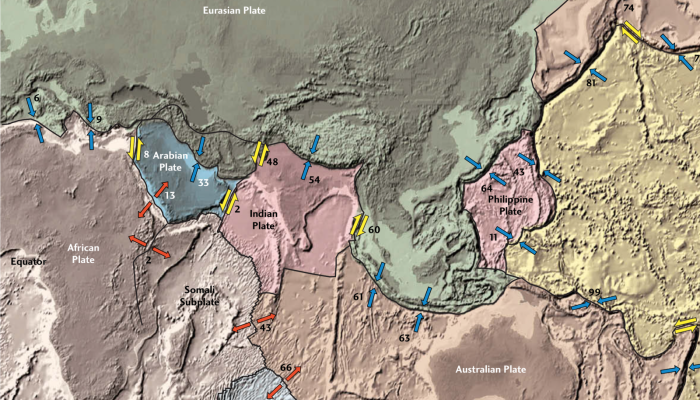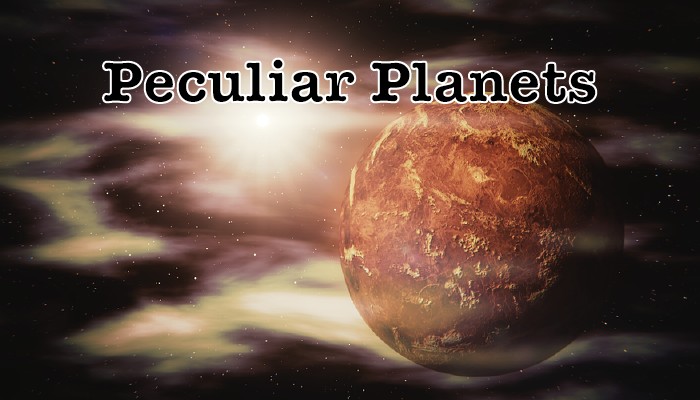Almost two months ago, in August 12, 2018 Parker Solar Probe (PSP) launched by NASA on a Delta IV Heavy rocket from Cape Canaveral, Florida. This is a long-awaited mission from the Heliospheric community. The first to explore the Sun within distances of ~0.167 AU (or 25 million kilometers) at its perihelia. Its ancestors were the successful Helios -A and -B spacecraft, a pair of probes launched in ...[Read More]
Geodynamics
Inversion 101 to 201 – Part 1: The forward problem
The Geodynamics 101 series serves to showcase the diversity of research topics and methods in the geodynamics community in an understandable manner. We welcome all researchers – PhD students to professors – to introduce their area of expertise in a lighthearted, entertaining manner and touch upon some of the outstanding questions and problems related to their fields. This time, Lars Gebraad, PhD s ...[Read More]
Tectonics and Structural Geology
Meeting Plate Tectonics – Dan McKenzie
These blogposts present interviews with outstanding scientists that bloomed and shape the theory that revolutionised Earth Sciences — Plate Tectonics. Get to know them, learn from their experience, discover the pieces of advice they share and find out where the newest challenges lie! Meeting Dan McKenzie Prof. Dan McKenzie is one of the key actors empowering the Plate Tectonic Theory. He was Profe ...[Read More]
Tectonics and Structural Geology
Meeting Plate Tectonics
The sixties brought us many moving moments: Woodstock, the civil rights movement, the moon landing… and the establishment of the plate tectonic theory. It is during the turbulent late sixties that scientists published groundbreaking manuscripts proving that pieces of the Earth’s outer layer are in a constant state of motion. In Late 1967 to mid-1968, Dan McKenzie and Robert L. Parker, Jason ...[Read More]
Natural Hazards
Volcanic eruptions: Sometimes natural spectacles, but other times disasters
In April 2018, an eruption of the Kilauea volcano in Hawaii started. The activity continued for months, with impressive lava flows that cut roads and even covered houses and entire neighbourhoods (Figure 1), forcing the evacuation of thousands of people. Fortunately, it did not take any life. Some weeks later, on June 3rd, Fuego volcano, in Guatemala, shocked the international community with a sh ...[Read More]
Cryospheric Sciences
Image of the Week – On thin [Arctic sea] ice
Perhaps the most enduring and important signal of a warming climate has been that the minimum Arctic sea ice extent, occurring each year in September, has declined precipitously. Over the last 40 years, most of the Arctic sea ice has thus been transformed to first-year ice that freezes in the winter and melts in the summer. Concern about sea ice extent and area is valid: since sea ice i ...[Read More]
Geodynamics
Oceans on Mars: the geodynamic record
Apart from our own planet Earth, there are a lot of Peculiar Planets out there! In this series we take a look at a planetary body or system worthy of our geodynamic attention, and this week we are back to our own solar system, more precisely to our neighbour Mars. In this post, Robert Citron, PhD student at the University of California, Berkeley, writes about the links between oceans, shorelines, ...[Read More]
Cryospheric Sciences
Image of the Week — Cryo Connect: connecting cryosphere scientists and information seekers
Communicating scientific findings toward non-experts is a vital part of cryosphere science. However, when it comes to climate change and its impact, the gap between scientific knowledge and human action has never been so evident (see for instance, the publication of the latest IPCC special report). Today, our image of the week features an interview with Cryo Connect, a new initiative for more effi ...[Read More]
Geodynamics
It’s just coding … – Scientific software development in geodynamics
As big software packages become a commonplace in geodynamics, which skills should a geodynamicist aim at having in software development? Which techniques should be considered a minimum standard for our software? This week Rene Gassmöller, project scientist at UC Davis, Computational Infrastructure for Geodynamics, shares his insights on the best practices to make scientific software better, and ho ...[Read More]
Seismology
Palu 2018 – Science and surprise behind the earthquake and tsunami
On September 28, 2018, a powerful 7.5-magnitude earthquake and an unexpected tsunami shook the Indonesian island of Sulawesi, leaving behind catastrophic results and open questions among geoscientists. How come this event is having such an impact on the scientific community? What we know so far On Friday afternoon (at around 5pm Western Indonesian Time) the Minahassa Peninsula on Sulawesi i ...[Read More]




![Image of the Week – On thin [Arctic sea] ice](https://blogs.egu.eu/divisions/cr/wp-content/blogs.dir/17/files/2018/10/kayak-700x400.jpg)

